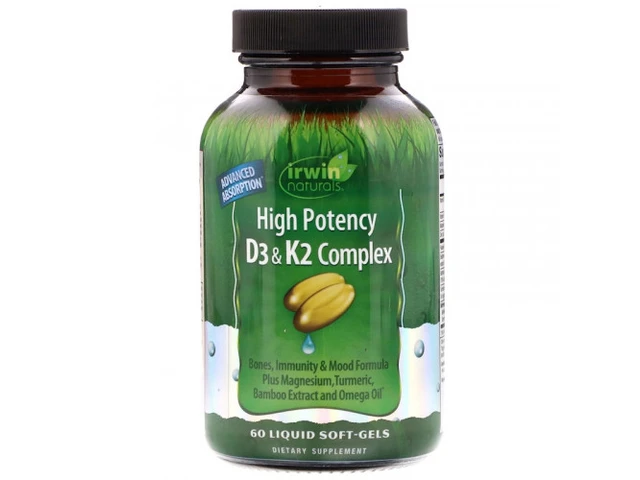Muscle Health Weight Calculator
Personalize Your Nutrition Plan
This tool calculates your recommended daily protein intake and caloric balance based on your body weight and muscle condition severity.
Your Personalized Nutrition Recommendations
- Daily Protein Target: grams
- Recommended Caloric Intake: kcal/day
- Protein Distribution: grams per meal
- Micronutrient Focus:
- Adjust caloric intake based on weekly progress and energy levels.
- Consult with a registered dietitian for personalized guidance.
- Include low-impact exercises to support muscle health.
When you live with a Skeletal Muscle Condition is a group of disorders that impair the muscles' ability to contract, maintain strength, and recover after activity. Conditions like muscular dystrophy, myopathy, or sarcopenia can make weight control feel like a moving target because muscle loss affects metabolism, calorie needs, and how you respond to food and movement.
Why Weight Matters When Muscles Are Compromised
Carrying extra pounds puts extra strain on weakened muscles, while being too thin can reduce the protein reserves needed for repair. Balancing healthy weight helps keep joints stable, supports breathing, and makes daily tasks-like climbing stairs or getting out of a chair-easier.
Understanding Your Body’s Numbers
First, get a baseline:
- Ask your doctor for a body composition scan (DXA or bio‑impedance). It tells you how much lean muscle vs. fat you have.
- Note your resting metabolic rate (RMR). Many clinics can measure it, or you can estimate it with online calculators that factor age, sex, and muscle mass.
- Track your weight for a week, noting the same time each morning. This gives you a realistic average.
These three numbers-lean mass, RMR, and average weight-become the compass for your nutrition and exercise plan.

Nutrition: Fueling Muscle Without Overeating
Nutrition is the single most adjustable lever. Focus on three core principles:
- Protein Intake the amount of high‑quality protein you eat daily, measured in grams per kilogram of body weight. Aim for 1.2-1.5g per kilogram if you can tolerate it; some specialists recommend up to 2g for severe muscle loss.
- Caloric Balance the relationship between calories consumed and calories burned. A modest deficit (250-500kcal per day) is enough to shed excess fat without starving muscles.
- Micronutrient Support vitamins and minerals that aid muscle metabolism, such as vitamin D, calcium, magnesium, and omega‑3 fatty acids. Include leafy greens, fortified dairy or alternatives, and fatty fish a few times weekly.
Spread protein evenly across meals-about 20-30g per sitting-to keep muscle synthesis turned on throughout the day.
| Food | Protein (g/100g) | Calories (kcal/100g) | Suitability |
|---|---|---|---|
| Chicken breast | 31 | 165 | Low‑fat, easy to digest |
| Greek yogurt (plain) | 10 | 59 | Probiotic, calcium rich |
| Lentils (cooked) | 9 | 116 | Plant‑based, high fiber |
| Eggs | 13 | 155 | Complete amino profile |
| Salmon | 20 | 208 | Omega‑3, anti‑inflammatory |
Movement That Protects, Not Punishes
Exercise is still essential, but the goal shifts from “burn calories” to “preserve or rebuild muscle while staying safe.”
- Low‑Impact Exercise activities that raise heart rate without hammering joints or over‑loading fragile muscles. Think seated marching, water aerobics, or recumbent cycling.
- Resistance Training using light weights, resistance bands, or body‑weight moves tailored to ability. Aim for 2-3 sessions weekly, focusing on major groups (legs, core, arms) with 1-2 sets of 8-12 reps.
- Flexibility & Balance stretching and proprioceptive drills that reduce fall risk. Gentle yoga or Tai Chi sessions improve range of motion.
Start each workout with a 5‑minute warm‑up-like arm circles or light pedal‑in‑water-to prime blood flow. End with a cool‑down and deep breathing to help the nervous system settle.
Creating a Weekly Action Plan
- Meal Prep Day: Cook a batch of lean protein (e.g., baked chicken) and chop veggies. Portion into containers so you never skip protein.
- Exercise Schedule: Block out three 30‑minute slots. If one day feels too hard, swap it for a walk or water‑based activity.
- Check‑In: Every Sunday, weigh yourself, log protein grams, and note energy levels. Adjust calories up 100kcal if you feel overly fatigued, down 100kcal if weight isn’t dropping after two weeks.
- Medical Review: Visit your physiatrist or endocrinologist every 3-6 months. They can re‑measure RMR and tweak any medication that affects metabolism.
This loop keeps you proactive, not reactive.

Avoiding Common Pitfalls
- Skipping Meals-muscles need a steady supply of amino acids; long gaps trigger catabolism.
- Over‑Restricting Calories-a severe deficit speeds muscle loss and can worsen fatigue.
- Ignoring Hydration-dehydration reduces blood flow to muscles, making even gentle activity feel harder.
- Relying Solely on Supplements-protein powders help fill gaps but can’t replace whole‑food nutrients.
- Neglecting Sleep-deep sleep is when growth hormone peaks, aiding muscle repair.
Tracking Progress Beyond the Scale
Weight is just one data point. Use these additional markers:
- Body Composition the proportion of lean mass versus fat mass. A 1‑2% increase in lean mass is a win, even if weight stays flat.
- Functional Strength how easily you can perform daily tasks like standing from a chair. Time how long it takes; improvement indicates success.
- Energy Levels subjective rating from 1-10 each morning. Consistent upward trends suggest nutrition and activity are on track.
Log these numbers in a simple notebook or a health‑tracking app. When you see positive trends, you’ll stay motivated.
Frequently Asked Questions
Can I lose weight if my metabolism is already low because of muscle loss?
Yes. By creating a modest calorie deficit and preserving protein intake, you can gradually shed fat while protecting the remaining muscle. The key is to avoid drastic cuts that trigger further muscle breakdown.
How much protein should I aim for each day?
Target 1.2-1.5grams per kilogram of body weight. If you weigh 70kg, that’s roughly 84-105grams of protein daily, split across 3-4 meals.
Are there specific exercises I should avoid?
High‑impact movements like jumping, sprinting, or heavy deadlifts can overwhelm weakened muscles and joints. Stick to low‑impact cardio, light resistance bands, and controlled body‑weight moves.
Should I use protein supplements?
Supplements are helpful if you struggle to meet protein goals with food alone, but they shouldn’t replace whole‑food sources that also provide micronutrients.
How often should I check my body composition?
Every 8-12 weeks gives enough time to notice changes without getting overly fixated on short‑term fluctuations.





darren coen
October 10, 2025 AT 19:53Thanks for sharing, this looks useful.
Jennifer Boyd
October 14, 2025 AT 07:13Wow, this tool could be a game‑changer for anyone wrestling with muscle‑related weight issues! 🎉 The way it tailors protein and calories to condition severity feels super personal. I love the reminder to revisit the numbers each week and adjust as you go. It even nudges you to squeeze in low‑impact moves, which is brilliant for joint health. Keep it up, and readers will feel empowered to take charge of their nutrition.
Lauren DiSabato
October 17, 2025 AT 18:33Honestly, anyone with even a cursory understanding of metabolic physiology can see that the calculator oversimplifies caloric needs. The lack of basal metabolic rate adjustments betrays a superficial grasp of the subject. Perhaps a more nuanced model would earn some credibility.
Hutchins Harbin
October 21, 2025 AT 05:53Scanning the interface, I notice the weight input lacks units clarification, which could confuse international users. Also, the condition dropdown could benefit from a brief description of each severity level. Overall, the layout feels clean, and the color contrast is spot‑on for readability.
Benjamin Herod
October 24, 2025 AT 03:20Such nitpicking! In the grand scheme, it’s a decent tool, not a PhD thesis. Still, a dash of polish wouldn’t hurt.
luemba leonardo brás kali
October 27, 2025 AT 14:40The calculator correctly uses the metric system for weight, which aligns with clinical standards. However, the placeholder text for protein grams is missing, potentially causing user uncertainty. Adding a default value or hint would improve usability.
Corey McGhie
October 30, 2025 AT 12:07Right, because a tiny hint is the difference between success and despair, isn’t it? Still, kudos for catching that – a little guidance never hurts anyone.
Ajayi samson
November 2, 2025 AT 23:27This so‑called “interactive” feature is a half‑baked gimmick that pretends to help while delivering vague advice. Users deserve better than this superficial fluff.
Lief Larson
November 5, 2025 AT 07:00Nice try but the design feels too plain no punch.
Julia Grace
November 9, 2025 AT 08:13Managing weight with a skeletal muscle condition is a multifaceted challenge that blends nutrition, activity, and medical oversight.
First, calculate your basal metabolic rate (BMR) using a reputable equation such as Mifflin‑St Jeor, then adjust for the reduced muscle mass you may have.
Next, add a modest activity factor that reflects low‑impact exercises like swimming, cycling, or resistance bands.
The calculator in the post gives a quick estimate, but you should treat it as a starting point rather than a final prescription.
Aim for a daily protein intake of 1.2–1.5 grams per kilogram of body weight, focusing on high‑quality sources like whey, fish, and legumes.
Distribute that protein across three to four meals to maximize muscle protein synthesis throughout the day.
Carbohydrate needs can be modest; prioritize complex carbs such as oats, sweet potatoes, and whole grains to sustain energy without spiking blood sugar.
Healthy fats from avocados, nuts, and olive oil support hormone balance, which is crucial for muscle maintenance.
Hydration is often overlooked; aim for at least 2‑3 liters of water daily, more if you’re sweating during workouts.
Keep a simple food journal – a spreadsheet or a phone app – to track calories and macronutrients, adjusting weekly based on weight trends.
Schedule a follow‑up with a registered dietitian who understands neuromuscular disorders; they can fine‑tune your plan and address micronutrient gaps.
Incorporate low‑impact strength training, such as resistance bands, to stimulate muscle fibers without overloading joints.
Stretching and mobility work can improve range of motion, making daily activities easier and reducing injury risk.
Sleep quality matters; aim for 7‑9 hours of uninterrupted rest to support recovery and metabolic health.
Finally, stay patient and compassionate with yourself – progress can be slow, but consistency will yield measurable improvements over time.
Sadie Bell
November 11, 2025 AT 15:47What a fantastic roadmap! I’m thrilled to see how each piece fits together, and I can already feel the boost in confidence. Even though I’m just starting out, I’ll try to incorporate those protein tips gradually. Keep the positivity coming, it’s contagious!
Noah Bentley
November 13, 2025 AT 09:27Sure, but notice the missing Oxford comma after “confidence” – a classic slip that weakens the flow. Also, “Even though I’m just starting out” could be tightened to “Although I’m just beginning.” Just saying.
Kathryn Jabek
November 16, 2025 AT 20:47In contemplating the intersection of muscular pathology and metabolic equilibrium, one discerns a profound dialectic between corporeal limitation and nutritional agency. The present calculator epitomizes an earnest attempt to bridge this dichotomy, yet it remains a heuristic rather than a deterministic oracle. It behooves the discerning individual to juxtapose such tools against the venerable corpus of clinical nutrition literature. Moreover, the ethical imperative to tailor recommendations to the nuanced lived experience of each patient cannot be overstated. Thus, one must engage with both empirical data and compassionate foresight to sculpt an optimal dietary paradigm.
Ogah John
November 19, 2025 AT 04:20Ah, the lofty prose! While the sentiment rings true, most of us just want a clear number and a simple meal plan, not a treatise on ethics. Still, your reminder about individual nuance is worth a nod.
Christian Andrabado
November 20, 2025 AT 22:00Fine, keep your “treatise” – just stop pretending it passes peer review. Your grammar could use a tutor.